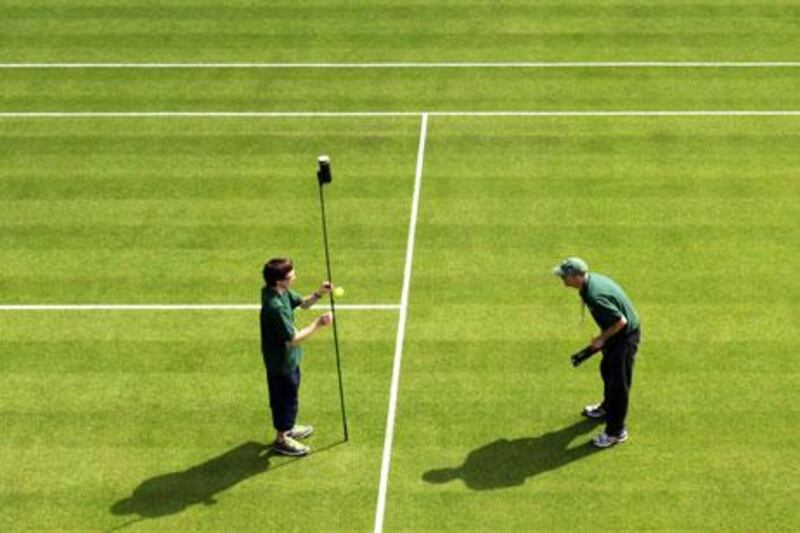Centre Court, strawberries and cream, the Fred Perry Statue: all powerful symbols of Wimbledon. But the enduring star at the All England Club each year may be the luxurious green grass on which the players make history.
For the world's billions who think of tennis as a game for clay or hard courts, it seems almost magical that a 14-day tournament can be contested on a surface as seemingly fragile as grass.
How does it survive? How can it provide true bounces? Consistent footing? Yet it does all that, decade after decade, providing a lush and visually appealing platform for arguably the planet's grandest tennis tournament.
This is not just any grass, to be sure: it is 100 per cent rye, considered one of the hardiest of all varieties. And it grows on an island known for plentiful rain and a minimum of scorching-hot days.
Still, Wimbledon's 19 grass courts are not simply the bounty of nature. They are refreshed annually with one tonne of grass seed, carefully nurtured and then trimmed to a height of exactly 8mm for the duration of the tournament.
Grass produces the fastest variety of tennis in the world, one particularly favourable to the serve-and-volley game.
Many players operate under the misapprehension that the grass affects the bounce of the ball. Actually, it is the hardness of the soil below that produces "kick". The dryer and harder the soil, the bigger the bounce.
Each court is mown and rolled at the completion of play each night, and the trimming often is so incremental that the entirety of the clippings from one court barely fill a bucket.
Eddie Seaward, the head groundskeeper at Wimbledon since 1991, told the Daily Telegraph that caring for the All England grass is "the total reverse of domestic lawn care.
"It involves lots of rolling before the championships," he said, "mowing very short every day and keeping the grass dry to make a hard playing surface."
Seaward and the 100 per cent rye surface are credited with keeping Wimbledon as popular as it is; the average power shot arrives about one-10th of a second slower than it did 20 years ago, giving clay-court specialists an even chance and making the All England Club the powerful lure it remains today.
[ poberjuerge@thenational.ae ]
More tennis, s10-11





